Silently drifting into Norway’s majestic Trollfjord, flanked by towering mountains, their peaks bathed in golden sunlight, I couldn’t believe my eyes. It’s almost midnight, yet it feels like the middle of the day.
The midnight sun is a truly remarkable phenomenon. The eternal daylight stretches one day into another, if you’re not careful, you’ll lose all concept of time.
I had the fortune of experiencing the ‘polar day’ as I journeyed along Norway’s stunning coastline aboard one of Hurtigruten’s ships, MS Nordlys. Calling in at 19 ports in just four days, there was so much to see and so much time to see it, for the night never came! The only problem was finding time to sleep…
Related: Aurora hunting — What it’s like to chase the northern lights along Norway’s dramatic coastline
Midnight sun voyage
Svolvær – Tromsø – Honningsvåg – Kirkenes
Price: From $454 (£359 or €423)
Duration: 4 days
If you’re interested in booking a midnight sun voyage like the one I went on, head over to Hurtigruten’s official site.
I began my journey in the beautiful coastal town of Bodø, the first European Capital of Culture north of the Arctic Circle. I wish I had longer to soak up the vibrant atmosphere in a town that basks in the glow of the midnight sun from the beginning of June until mid-July.
Though I had a long day of traveling, I made sure to stay up and watch the sun dip below a distant mountain at the stroke of midnight. Then exactly one minute past midnight it reappeared, the golden rays bouncing off nearby snowcapped mountains and dancing along the rippling waters of the fjord. It was a sight to behold.
I didn’t get much sleep that night as I was too excited and couldn’t stop watching the scenery change as the nighttime sun traversed the sky. The light was incredible, and I couldn’t help but take hundreds of photographs. Each time I looked away and back, the landscape had morphed into another majestic scene drenched in golden light.
The next day the clouds had descended and shrouded the midnight sun in a thick blanket of grey. But it didn’t detract from the natural beauty of the region.
That afternoon I was warmly welcomed aboard Hurtigruten’s MS Nordlys ship and eagerly awaited my trip north.
The first port of call where we had long enough to disembark and explore was Svolvær, at the heart of the scenic Lofoten archipelago. Sandwiched between the mountains and the sea, Svolvær is an iconic destination for those wanting to experience the midnight sun during the summer months and the northern lights during the winter. Though the sun remained hidden behind a blanket of clouds during our visit to Svolvær, I had pinned my hopes on it clearing up that night so we could welcome in the day of the summer solstice at the stroke of midnight, under the midnight sun.
Sure enough, as we sailed into the magnificent Trollfjord, encompassed by steep mountain peaks cascading waterfalls, the midnight sun shone brightly, casting a golden hue upon the very tips of the highest peaks. I stayed out until at least 2 a.m. just soaking it all in and welcoming in the “longest day of the year”.
For the rest of the trip, I felt like I was playing an elaborate game of cat and mouse with the midnight sun. It would make the occasional appearance, bathing the landscape in a glorious light, before dipping back behind a cloud and out of view. This kept me more than entertained throughout the short trip and made me feel like the chase for the midnight sun was well and truly on.
But then when I was preparing to depart from Kirkenes, the midnight sun surrendered and greeted us all with pristine blue skies and dazzling sunlight that stretched through the night and into the next day.
I’ll never forget my time exploring Norway’s coastline under the midnight sun. The way the landscape changed when the rich rays of sunlight peeked through the clouds and how the snowcapped mountains reflected the sun rays, glowing gold under the midnight sun. I have a whole new appreciation for our home star after seeing it, quite literally, in a new light.
What causes the midnight sun?
We have Earth’s axial tilt to thank for the midnight sun. As Earth orbits the sun it is tilted by about 23.4 degrees, so one hemisphere is always angled toward the sun and the other away from it. This is also why there are opposite seasons in the Northern and Southern hemispheres.
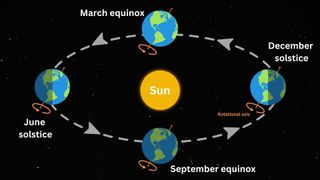
During the June solstice (referred to as the summer solstice in the Northern Hemisphere), the North Pole tilts toward the sun. In the northern polar region, the sun remains above the horizon, leading to the phenomenon known as the midnight sun. Conversely, the southern polar region experiences 24 hours of darkness, known as the polar night.
Six months later, during the December solstice, Earth is on the opposite side of its orbit around the sun, and the reverse occurs: The South Pole tilts toward the sun, experiencing the midnight sun, while the North Pole is enveloped in 24-hour darkness.
The phenomenon of the midnight sun can be observed within the Arctic and Antarctic circles during their respective summer seasons. The closer one is to either the North or South Pole during summer, the longer the duration of the midnight sun.
Endless exploring
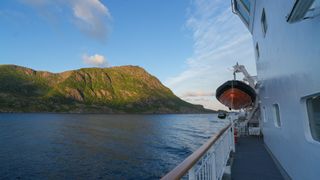
A huge benefit of the midnight sun is the endless days provide ample opportunities to explore, experience, and fully appreciate the stunning Norwegian coast in all its glory. The big problem was finding time to sleep, but isn’t that what the flight home is for?
On day 2 of the voyage we sailed up to Tromsø, the third-largest city north of the Arctic Circle, and had a few hours to explore the “Gateway to the Arctic” which is also fondly known as “The Paris of the North” (even though the city has nothing to do with Paris, or France for that matter). Tromsø is a vibrant university town with a wealth of outdoor and indoor activities that will keep any intrepid traveler entertained, whether you’re heading north for the midnight sun or to experience the northern lights during the winter months.
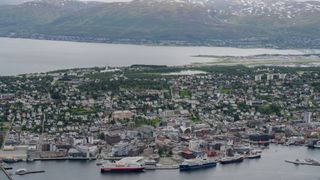
That day I explored Tromsø as part of an excursion organized by Hurtigruten. We visited the magnificent Arctic Cathedral and stood in awe of its impressive glass mosaic window and headed to “Full Steam”, the world’s northernmost coastal museum to learn about the region’s maritime history and traditions of the Sea Sami. The Sami people are Indigenous people of northern Europe who live in Norway, Sweden, Finland and Russia. There are approximately 80,000 Sami and about half of them live in Norway, according to travel website Visit Norway.
The highlight for me that day in Tromsø was taking the cable car up Mount Storsteinen, 1,378 feet (420 meters) above sea level. Though cloudy, the views were breathtaking, with mountains and fjords stretching as far as the eye could see.
The following day we ventured up to Norway’s northern frontier, Honningsvåg, home to the North Cape, where a globe monument marks the top of continental Europe. Last year I took part in an excursion to the North Cape so I wanted to try something different this time and decided to take part in the birdwatching safari that departed the Viking fishing village of Gjesvær and explored the nearby islands of Gjesværstappan. I really wanted to see puffins.
As we trundled along the relatively calm waters we were greeted by thousands of seabird colonies, from razor bills to gannets and guillemots and YES you guessed it… puffins!
We also saw a harbor porpoise and a very cheeky seal that just played games with any photographer trying to snap its portrait. It knew exactly when to peek its head above water to animate the crowd of onlookers before ducking back below the surface just as you were about to push that shutter button. I think it knew exactly what it was doing.
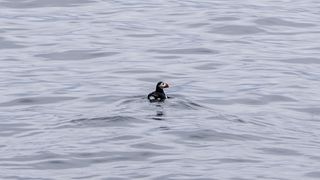
Life onboard
In 2023, Hurtigruten celebrated its 130th anniversary. The company not only offers adventurous expeditions and specialized trips but also serves as a lifeline for many remote communities along the Norwegian coast. By delivering mail, home supplies, and essential transport links, Hurtigruten is warmly welcomed at every port.
This was the second voyage I’d taken with Hurtigruten, both taken at different times of the year, one in the winter and the other in the summer. Though the landscape looked dramatically different during both voyages, one thing that didn’t change was the warm welcome and feeling of home I felt as soon as I stepped aboard.
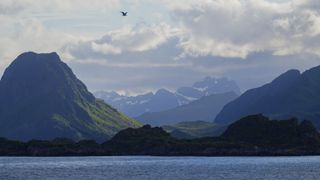
For this trip, I was aboard MS Nordlys which translates to “Northern Lights” in Norwegian. With a capacity of just 590 people and 471 beds, MS Nordyls is the perfect size for those wishing to embrace the relaxing ambiance with like-minded individuals. I particularly enjoyed sitting in the panoramic lounge with floor-to-ceiling windows allowing you to sit and watch the world go by.
Due to their smaller size (in comparison to large cruise ships), Hurtigruten ships can access remote areas and travel through smaller fjords, meaning passengers can experience even more of the rugged Norwegian coastline than if they were to take a larger cruise liner.
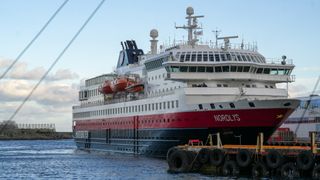
Each day the Coastal Expedition team would run hour-long seminars which were a combination of a talk on the local history and culture of the regions we would be visiting that day, along with some local music and a brief Norwegian language lesson. These seminars were great fun and a perfect way to introduce us to the many different parts of Norway that we would visit during the voyage.
As the Norwegians like to say, “There’s no such thing as bad weather, only bad clothes.” Therefore, preparation is key! I actually found packing for my prior winter adventure much easier as it was simply a case of throwing in everything and anything warm and layering up! But the weather was far more varied during the summer voyage. There were days when you could sit out on the deck in jeans and a t-shirt and others where you had to wear multiple layers and sturdy outerwear to prevent the biting wind from piercing through. So for a summer voyage, I recommend preparing for every eventuality! A light hat and a pair of gloves also wouldn’t go amiss. Oh and don’t forget a bathing suit if you wish to make use of one of Hurtigruten’s outdoor hot tubs — now that is an experience I can highly recommend.
The food onboard Hurtigruten is also second to none. They take great pride in Norway’s Coastal Kitchen which collaborates with 50 local farms, bakeries, and producers across the country. Guests not only get to see the Norwegian coast but taste it too!
From melt-in-your-mouth cod from Vesterålen and award-winning cheeses from Lofoten to top-quality craft beer from Bergen, there’s no shortage of culinary delights. Dietary requirements are well accommodated, ensuring everyone can experience authentic local cuisine. Guests enjoy three daily meals in the main restaurant Torget with buffet-style breakfasts and lunches and three-course meals for dinner. There is also an à la carte fine-dining restaurant “Kysten,” all-day dining in the bistro “Brygga” and delicious ice cream available from the bakery Multe.
For anyone wishing to experience the weirdness of the midnight sun or the unbelievable beauty of the northern lights, look no further than a voyage with Hurtigruten. The mighty ships are an iconic feature of the Norwegian coastline and bring you closer to the unique beauty and culture of Norway’s coast than anyone else.
Editor’s note: This article was made possible by travel provided by Hurtigruten.










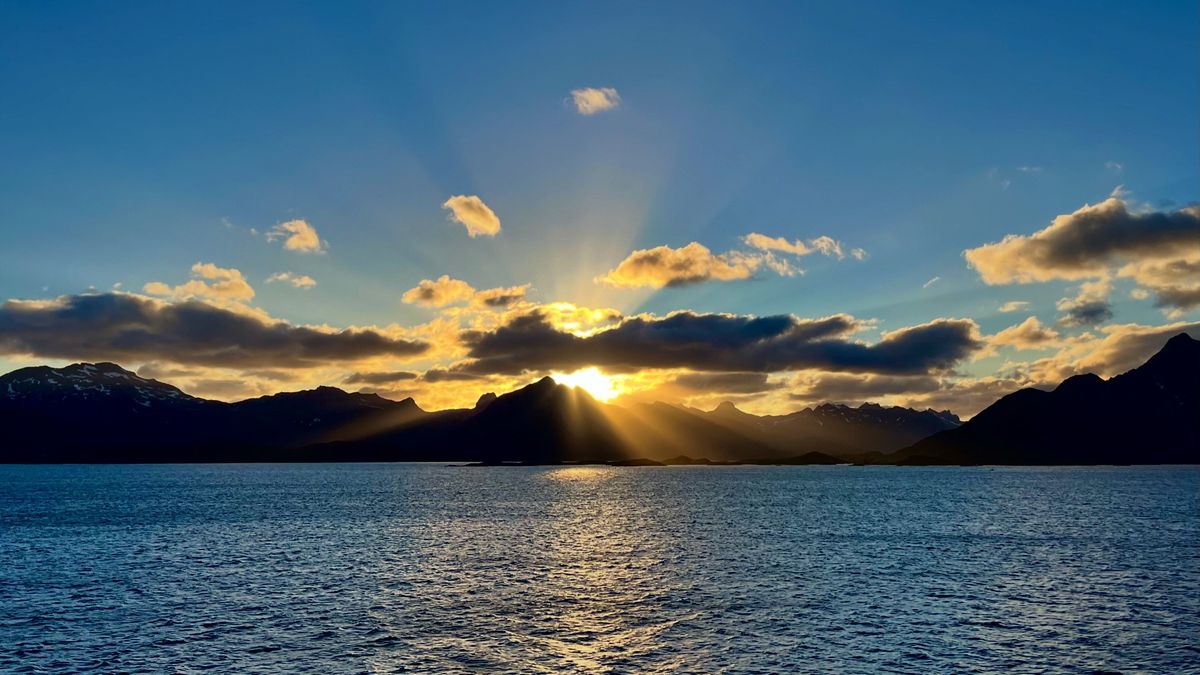







.png)


Discussion about this post